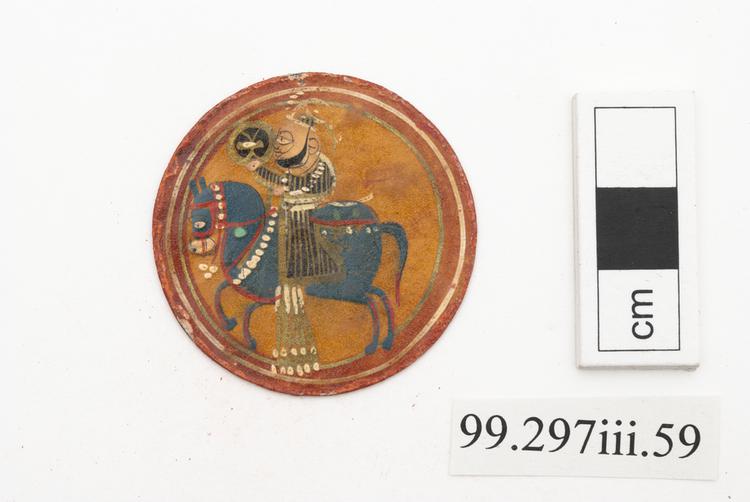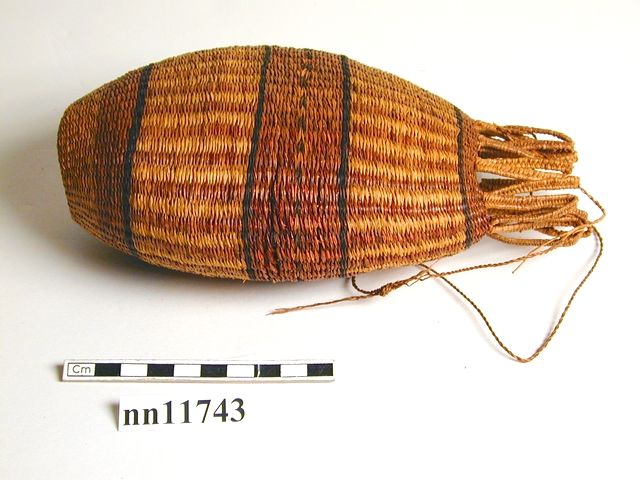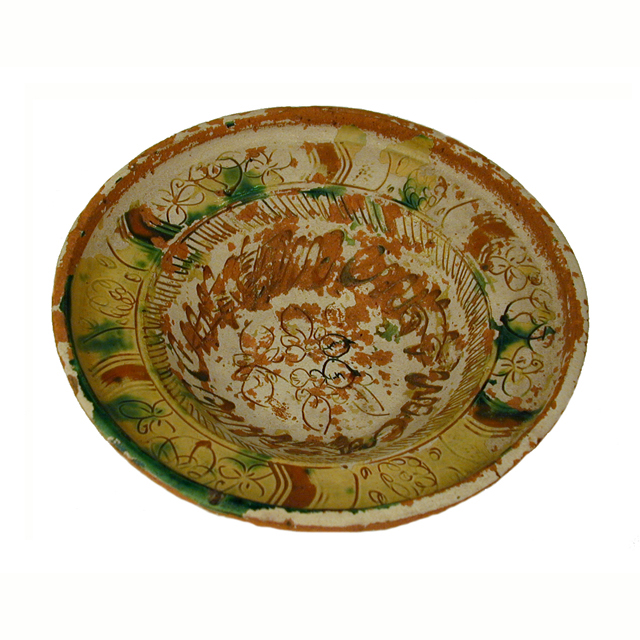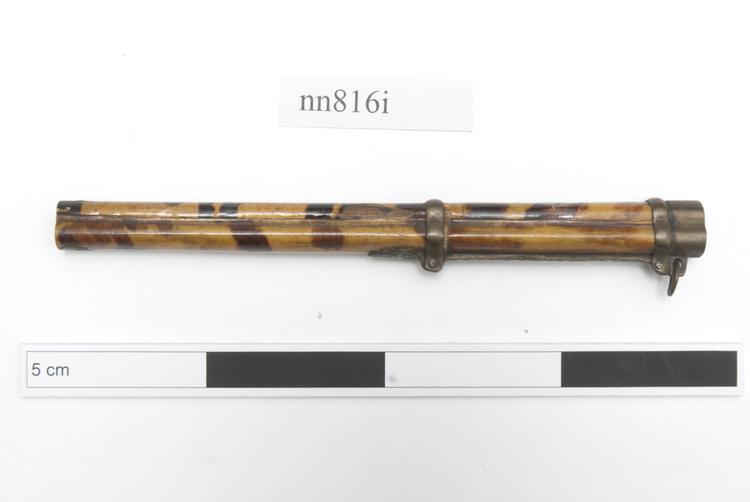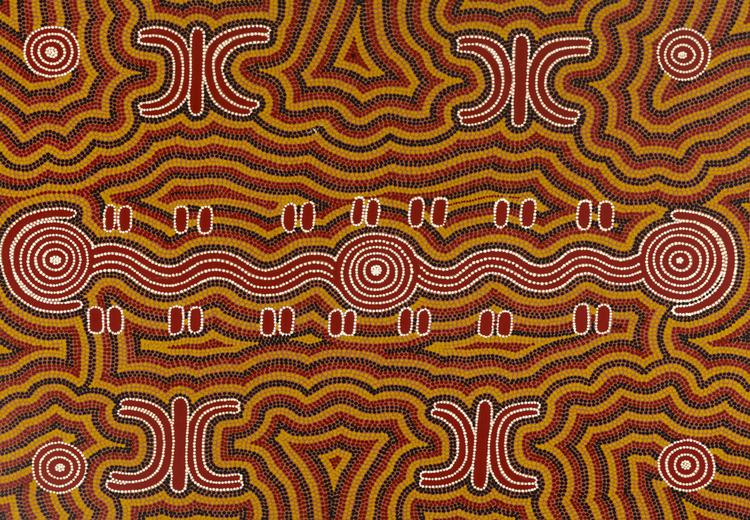
This painting is titled 'Ngapa Jukurrpa' or 'Water Dreaming', and is by Lynette Nampijinpa Granites, a Warlpiri artist from Yuendumu. It is painted in white, red, ochre-yellow and black dot method typical of the Western Desert artists, on a red-brown background. The horizontal or central motif shows a concentric circle at each end of a series of parallel wavy lines which travels through a central concentric circle. The concentric circles indicate waterholes with the wavy lines being water flowing from one to the other through a central waterhole. The U or C shape at each end shows someone sitting at the waterhole. Pairs of small red oval shapes outlined in white dots are spaced evenly along the top and bottom of the wavy line. These may be coolamans or wooden oval bowls for carrying water, or clouds. Further to the top and bottom of the painting are two pairs of C or U shapes back to back with an elongated oval separating them. These depict women sitting with clouds or sticks. A smaller concentric circle is placed in each corner of the painting, perhaps indicating a resting place or more waterholes. The background is infilled with repeating double lines of same coloured dots, side by side, making an undulating ground.
There is a label on the back reading, ' Lynette Nampijimpa Granites Nelson. Ngapa dreaming rain. Warlpiri dreaming site near Mount Theo.'
'Rain Water Dreaming’, Ngapa Jukurrpa, Lynette Granites Nampijimpa, Warlukurlangu Artists’ Collective, Warlpiri people, Yuendumu, Northern Territory, Australia The ‘dot painting’ style of the Warlpiri people of the Northern Territory of Australia has become internationally regarded as among the finest art styles in the world. Here the aesthetic tastes of the Western Modern Art movement have come to find a natural partner in the non-realist style of Aboriginal Australian painting. This has resulted in the development over the 20th Century of an Aboriginal painting style of aligned and clustered dots in acrylic paints on canvas, which has come to command high prices at auction. The concept of ‘Dreaming’ is among the most important in Aboriginal culture, and combines in one term (that cannot be easily translated into English) knowledge about the timeless prehistoric period of creation, the actions of supernatural beings and ancestors in the world, and the geographical features of the artist’s homeland. A dreaming is part history, part theology, part literature and part geography lesson. Here is represented water falling and flowing across the land near Mount Theo. Several other Warlpiri painters have painted their own interpretations of the ‘Water Dreaming’, but the works of Lynette Granites Nampijimpa are widely regarded as among the finest of all Aboriginal paintings from the later 20th Century. Nampijimpa herself painted more than one version of the ‘Water Dreaming’, and so it is wise to understand it as an enduring subject to which artists return over and over. Different artists inherit different dreaming themes as personal property from their mother’s people or their father’s people. Acrylic on canvas. Painted in the 1980s. Formerly in the private collection of Prof Ulli Beier, and sold to the Horniman Museum in 1994.




